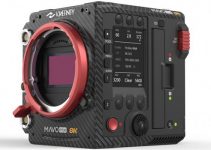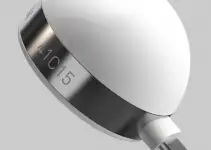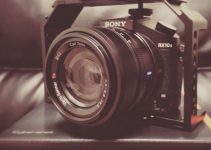Cinema lenses from companies like Zeiss, Panavision, and Cooke don’t get as much attention online as the affordable stills and modified/rehoused cinema glass that many of us use from companies like Rokinon-Xeen, or Meike. That’s because high-end cinema glass, with price tags higher than most houses, aren’t intended to be purchased by individual camera operators. Instead, they’re intended to be rented through rental houses that maintain them for decades.
These lenses are professional, standardized tools that have specific purposes in their construction, deliver consistent looks, and offer the best ergonomics for getting the job done the right way. In Depth Cine gave us this fantastic overview of the top pro cinema lenses in use today with a bit of their history and an explanation of why they’re so sought after. Let’s check it out!
Part One: Zeiss, Panavision, Cooke, Hawk
Zeiss Super Speeds
The Zeiss Super Speeds have been around for decades and are a popular choice for productions with their small bodies, lightweight design, and super fast T1.3 apertures.
They comes in a standard set of 18mm, 25mm, 35mm, 50mm, 85mm with all of the lenses featuring a 80mm front diameter for super fast lenses changes; however, they’re not without their flaws.
The extending front barrel means that only clip-on matte boxes will work, and if they’re clipped on too tightly it might prevent the lens from focusing.
Their subtle sharp, low contrast, milky characteristics with neutral cool color rendition and flares that fill the lenses up with color make them the perfect choice for DPs looking for a lens to form the basis of the color pallet of their films.
Panavision C-Series
Originally released in 1968, the Panavision C-Series is an anamorphic set of lenses that are a favorite among DPs looking for a classic film look.
The lenses are incredibly compact and lightweight considering all the glass elements require to produce an anamorphic image, making them the clear choice for projects requiring steadicam or handheld shots.
They’re not overly sharp, have a nice graduated depth of field, offer the classic anamorphic bokeh with eye popping blue streak flares.
The main drawback of these lenses is the they pre-date the use of clip on matte boxes and all of the front diameters differ in size, meaning each lens changes requires a new clamp which drastically slows down lens changes.
Cooke S4
Created in the late 1990s, the Cooke S4 lenses are widely used in Hollywood films, and feature that classic hexagon (stop sign) bokeh that we all know so well.
They’re available in a large set of focal lens with a consistent 110m front diameter. They’re very modern and easy to work with on set, and for VFX work they feature the ability to relay focal length and focus distance information.
Known for their increased contrast, minimal aberrations, healthy skin tones, warmth, consistency, and sharpness, these lenses are literally everywhere and their quality is hard to beat.
Hawk V-Lite
Vantage, the German-based company, has been making these stellar modern anamorphic lenses since 2001.
Specifically designed to have no shift in T-stop while focusing, these 8 anamorphic focal lengths are lightweight and consistent with increased definition, increased contrast, and feature an accurate, nicely spaced focus scale which makes then very easy to work with on set.
When using wider focal lengths there is a significant amount of distortion, but even with that bending, the look it produces is very cool.
Part 2: Zeiss, Canon, Cooke, Arri, Angénieux
Cooke Speed Panchro
Produced by Cooke since 1920 in England, these spherical 7 prime lenses revolutionized the industry with their T/2 aperture – in a time when lenses were far slower.
These lenses are smaller than modern cinema glass, and often don’t cover bigger digital sensors.
Three series of these lenses were produced SI, SII, SIII until Cooke stopped making these lenses in the 1960s. Now these lenses are rehoused to work with PL mount cameras, and the quality of that rehousing varies across the globe.
The True Lens Services rehousing is the most preferred as it offers a user-friendly, standardized, smooth focus motion.
Arri / Zeiss Master Prime
Build in partnership with Arri and Zeiss in 2005, these 16 prime lenses come in a range of 12-150mm with a consistent T/1.3 aperture with a standardized 114m front diameter.
They’re designed to be as sharp as possible, and easy for assistants to work with thanks to their consistency across the range.
Maintaining sharpness cross the frame, these lenses have absolutely no focus breathing or aberrations. They feature a high contrast, which is good for modern digital sensors, and reduced flares.
When the DP is looking to counteract the distortion of film or for capturing the maximum clarity with a digital sensor, this is where they turn.
Angénieux Optimo 24-290mm
Designed and released in 2001, this workhorse zoom features incredibly high magnification, and a fixed T/2.8 aperture. Focus scale remains accurate throughout the zoom range.
But it is full of glass, super heavy, can’t be used handheld, and isn’t suitable to smaller bodied cameras.
It’s a good single lens for productions wanting to save money, and make reframing shots a breeze.
All stated, it is very sharp, but not nearly has sharp as modern primes. There is a slight Distortion in wider focal lengths like 24mm but this lens features a versatile zoom range, solid build quality, and consistent optical design that makes it a favorite in Hollywood.
Canon K35
Launched in the 1970s & 1980s and based on the designed of their FD lenses, which many independent shooter today adapt to their Canon EF cameras for a cool vintage look, these lenses are rare and hard to find.
The Canon K35 are very similar to super speeds with a compact, lightweight body, and a consistent T/1.4 aperture.
K35s are great for handheld, gimbal, or drone work and cover a full frame sensor with a sharp and lower contrast projection.
Arri DNA
Designed in conjunction with DPs inspired by old Hasselblad lenses with the ability to cover large format digital sensors like the sensor in the Arri 65, these very fast lenses were released in 2016 with stops ranging from T1.6 to T2.8.
They offer great ergonomics with a smooth focus pull, 114mm Front Diameter, and well-spaced distance markings.
Like the Cooke S4, these lenses record metadata and are great for VFX work. The offer perfect sharpness, neutral color, great skin tones, amazing focus falloff, and dreamy bokeh.
Conclusion
Most of us have never seen these lenses in person, but having lenses that are specifically crafted for professional filmmaking that are ergonomically made and easy to work with while on a team is paramount to a high-end film crew. The standards that have been developed over the years and have guided the training of the world’s greatest operators and assistants.
If you’re currently filming with DSLR lenses or affordable glass, don’t go thinking you’ve got to sell your car to pick up ONE of these. They were never intended for you to purchase, and you probably wouldn’t make your money back in your investment.
These lenses are intended for rental houses, and for people like you and I to rent for specific projects that would benefit from their customized characteristics.
[source: In Depth Cine]
Disclaimer: As an Amazon Associate partner and participant in B&H and Adorama Affiliate programmes, we earn a small comission from each purchase made through the affiliate links listed above at no additional cost to you.




